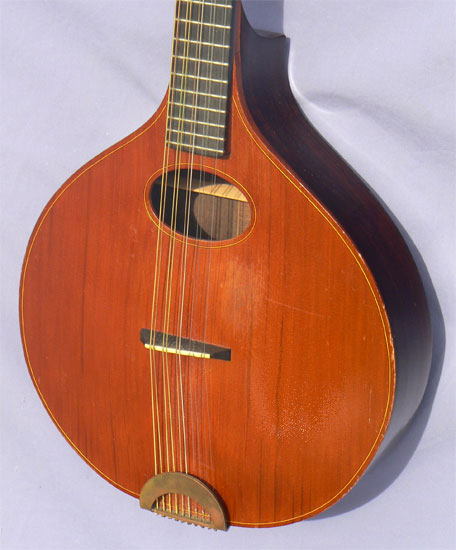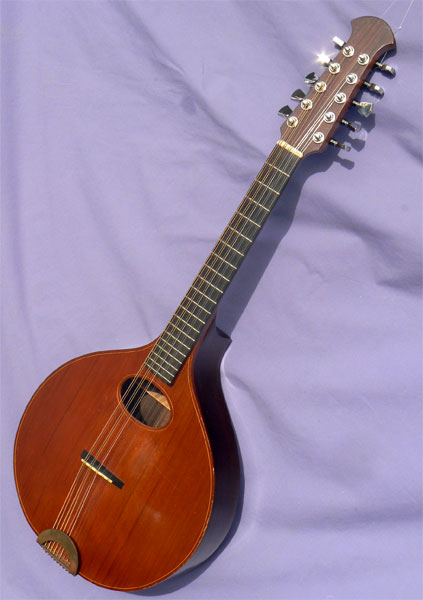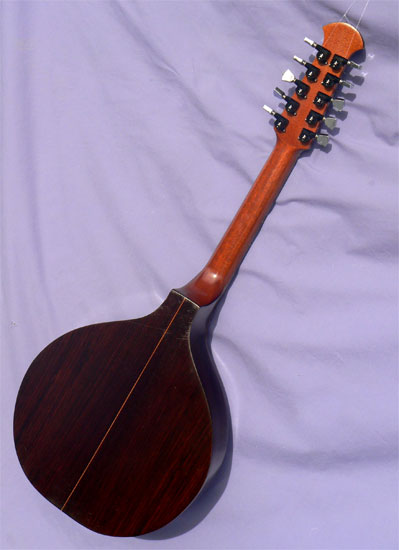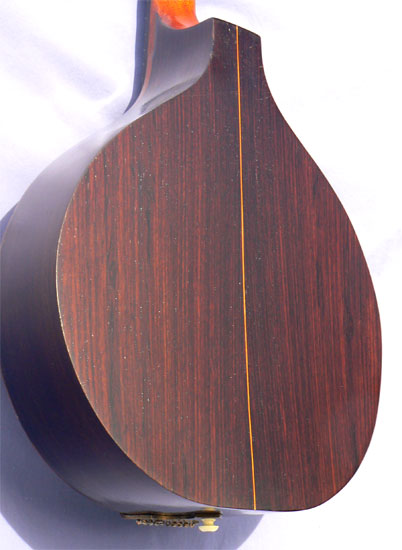

Home / Instruments /Accessories / Ordering / Tips / Friends
archtop.com

late '70s Stefan Sobell Cittern
Status: Pricing and hold status for all instruments currently available is shown on our Instruments page here. If this instrument does not appear on the Instruments page it has been sold, and is no longer available. Photos and descriptions of Previously Sold instruments may be found here. To be notified of examples of this model or similar instruments in the future, please contact [email protected],. Please be specific on which instrument(s) you're looking for, and we'll be happy to contact you as soon as they become available.
Body Width: 13 1/4" Depth at Endpin 4" Scale Length: 20" Nut width: 1 5/8"
Materials and Hardware: Solid bookmatched hand graduated cedar soundboard; hand graduated figured Indian rosewood body and peghead facing; solid mahogany neck with ebony fingerboard; solid bone nut; Gotoh 'Star' sealed tuners; custom brass crescent tailpiece; solid ebony bridge with bone saddle.
Notes: It's said Martin Luther played one, on his days off from thundering at the papacy. English barbers and their customers entertained one another with the instrument through the late Renaissance and early Baroque eras. With its flat back both easier to build and to hold than the bowl backed lute, the cittern was one of the most popular plectrum instruments of the day, and by the end of the 18th century, was among the first to be strung with metal strings.
Almost exactly half a millennium after Luther's birth, a young Stefan Sobell, who counted among his inspirations a prewar Martin C-1 archtop, almost single handedly revived this venerable instrument. Since that time, no contemporary luthier has been more closely identified with the cittern, which has become popular with Celtic players, folk revivalists, and adventurous strummers on both sides of the pond.
A ten string instrument in double courses, Sobell's innovative citterns were designed with a carved, arched soundboard, enhancing their projection and volume, in contrast to the more common flat topped Irish Bouzoukis. Today, citterns are played in a variety of tunings, often a modified open D or G, or in fifths like an octave mandolin. This rare early Sobell example was built with a compact scale of 20 inches, between a mandola and mandocello in length. Ideal for players looking for faster articulation, or simply those with smaller hands, this shorter scale eases stretch chord voicings, and facilitates quicker, more precise melodic runs.
This lovely instrument is crafted with a hand graduated, fine grained arched cedar top, and a lovely solid Indian rosewood body. At just 3lb 7oz, it is delightfully light in weight; with tonewood now aged for close to half a century. The thin, hand rubbed violin style shellac finish maximizes the clarity and projection of the soundboard, this painstaking and vibrant finish option has been unavailable from this builder since he switched to melamine lacquer in the late 70's. Together with the Gotoh 'Star' tuners, they suggest a dating of the instrument somewhere between 1975 and 1978.
Maintained in fine all-original condition, the instrument shows no cracks or repairs, and apart from some pick marks near the soundhole, shows notably little playwear for its long career. The voice is enchanting: clear and open, with brilliant highs, vibrant lows, and pronounced natural reverb and sustain. Action is smooth and low over fine original fretwork, and a fresh high precision setup. A remarkable find, from the modern rediscovery of this Elizabethan classic. One only, call now.
Case: Handbuilt wooden hardshell case with tan Cordura cover.



